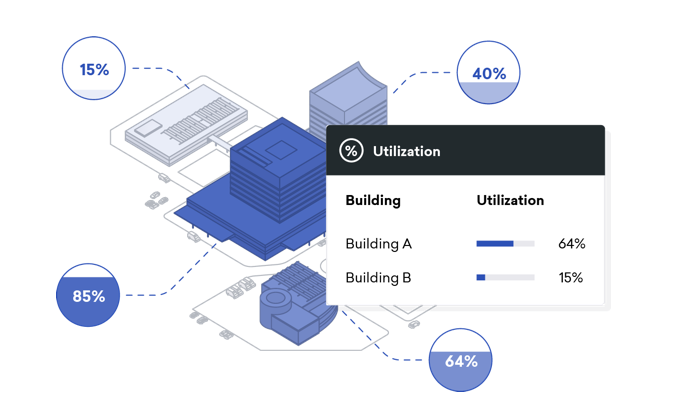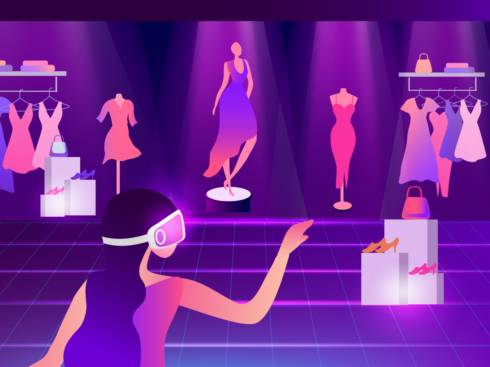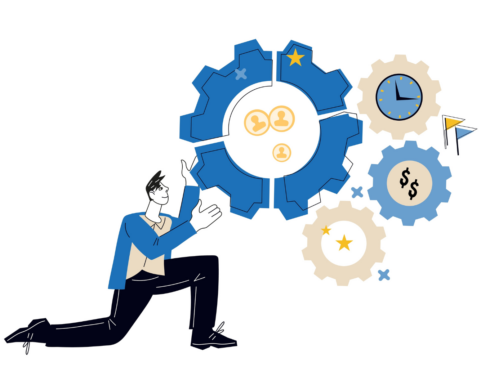
SUMMARY
The environment of your work-space determines your productivity.
Productivity drains when there is lack of meeting space.
Startups have increasingly opted for shared spaces like WeWork.
I fund startups for a living and before that I ran two software startups that I founded. I’ve spent countless hours looking at historical finances, budgets, forecasts and future projections. With a standard tech startup I can tell you in my sleep that your two biggest cost items by a long shot are people (between 60–75% of total costs) and space (10–20% of total costs). The only other significant cost item that I see in some early-stage startups is inventory (for hardware or eCommerce companies).
In the earliest stages of a company, a startup will often cram as many people into small rooms as is possible in order to conserve on office costs. When a company raises the capital it inevitably begins to look for office space in order to increase worker productivity and happiness. Because it’s hard to predict how much space you’ll need as you expand (or, gulp, downside) startups have increasingly turned to shared spaces like WeWork, which act a bit like cloud hosting in that they allow you scale up or scale down as your business expands or slows down.
Anybody who has spent time around startups can tell you that there are a bunch of productivity drains that can come from these environments:
- Lack of meeting space for having discussions
- Inability to concentrate due to being surrounded by “loud talkers”
- Huge lines waiting at shared security check-ins, elevators or lunch lines
Knowing the problems of “managing people around spaces” was one of the primary reasons I backed the company Density, who built a “depth sensor” that hangs above doors and anonymously tracks spaces as seen in the GIF below.
The technology is now deployed across many clients including LinkedIn, NYU, Dropbox, Envoy and many others so we’ve learned a lot about how people use solutions like Density to increase productivity, improve physical security and better match space with people. Below are some great examples of common problems & solutions we’ve seen:
The meeting room camper / the meeting room squatter/phantom
Gartner estimates the average employee spends 27 hours/year looking for available spaces to meet — this is rarely because companies don’t have enough space. Most often, it’s because they don’t have the right mix of small / large / flex working space and as a result, people tend to hog space when it is available.
Once organizations scale they inevitably implement systems to make booking shared spaces more streamlined and usually more democratic — the general procedure being that you “book a meeting room” by the hour via a scheduling system. We’ve all experienced the “squatter” who just goes into a meeting room and startups working on takes a 1–1 meeting in a room built for 12 and doesn’t bother booking it. Some people go the opposite route and book hours on end so that they can “camp” in a meeting room to get long periods of quiet work done or take 1–1 meetings at the expense of group needs.
Equally problematic is the “phantom” who books the meeting room for hours on end to block the room, only using it periodically. I saw this kind of behavior even 20 years ago when I worked at Accenture where the staff was mostly at client sites but when they returned to the office there was a rush to phantom book the limited meeting rooms.
At Density, we worked with clients to integrate into their Outlook system so management could better evaluate when teams booked meeting room space and then compare against the Density sensor data to see when the room was actually used. It can compare hours booked vs. used as well at number of people booked vs. attended with the goal of helping the enterprise better manage its limited space resources.
The lunch conundrum
Another major productivity drain as companies scale (or as shared work spaces fill up) are lunch lines. We have seen the rise in companies using Density to better track the flow of people through the commissaries at breakfast, lunch and dinner. They have integrated this with internal systems on Slack or Facebook Messenger to allow employees to check the wait times in real time and plan their days accordingly. This has also helped management figure out how to staff up restaurant staff in peak hours. We’ve even seen some forward thinking airlines and travel companies use these sensors to better track the staffing levels of lounges throughout the day.
The tailgater
Most offices employ physical security to protect both assets and safety yet we’ve all witnessed the “tailgater” who waits for somebody else to scan his or her card and then walks quickly behind them and gets access. This is much harder to do in high-rise buildings with sufficient security guards but even there after-hour problems persist. As you’ll see in the video below, Dropbox has used Density paired with its access-control system to flag for security whenever there is a tailgater. In the video they show a real-life situation (faces blurred) where a tailgater posing as just another employee looking at his smart phone who then broke in and stole several laptops. This problem is even more pronounced on campuses where buildings have more ingress & egress points. Dropbox was having more than 100 tailgating events / week and while most of these are likely not nefarious, having employees become aware of the problem is the first line of defense.
The wasted space / the oversized meeting rooms
Perhaps the group that most values the ability to know how people use spaces are the facilities management groups responsible for space planning. As businesses expand you naturally find meeting rooms built for 12 but used mostly for 2–4 people at a time that would more effectively be built at 2 meeting rooms. We see companies that do large acquisitions and have to figure out how to consolidate companies and staff. During a customer pilot, a Fortune 1000 company discovered that an 8-person conference room was used by 3 or fewer people for 78% of all business hours; it was used by 8 people (its intended capacity) just 3% of the time. By expanding the study and right-sizing their conference room mix, this company is likely to solve their meeting room problem and save tens of millions of dollars in avoided real estate expansion costs.
The insurance risk
Have you ever noticed when you walk into a bar, concert hall, stadium or similar venue and there is a person with a counter that clicks when you walk through? Almost certainly what they’re doing is manually monitoring crowd sizes for insurance (and ultimately for safety) purposes.
We now have venues using Density to control crowd sizes and ensure they aren’t violating their insurance policies. A bar we work with was getting multiple $1,000 fines from the Fire Dept every month for being over capacity — this despite having staff on hand to count manually. After installing Density, the fire marshal looked at the count on the bar manager’s iPhone and said, “that’s really cool.” He then left them alone because they could prove they were in compliance w/ the code.
Unintended use cases
By now, we’ve seen a lot! From people wanting Density to track that Alzheimer’s patients aren’t moving outside of a pre-agreed space to gig-economy companies wanting to be able to anonymously track whether their workers or whether their customers are initiating unwanted physical contact. People often ask me, “why don’t they just use cameras?” Of course there are some good uses for cameras in fields like surveillance but in the modern world there are many places where we want to track the flow of people (bathroom usage, just one example!) but don’t want to record people. In addition, the ability to interpret the data and deal with the volumes of information is much more cost-effective when you’re dealing with “polygons” (shapes from a laser) than dealing with full video footage.
[This article appeared first on bothsidesofthetable and has been reproduced with permission.]


























